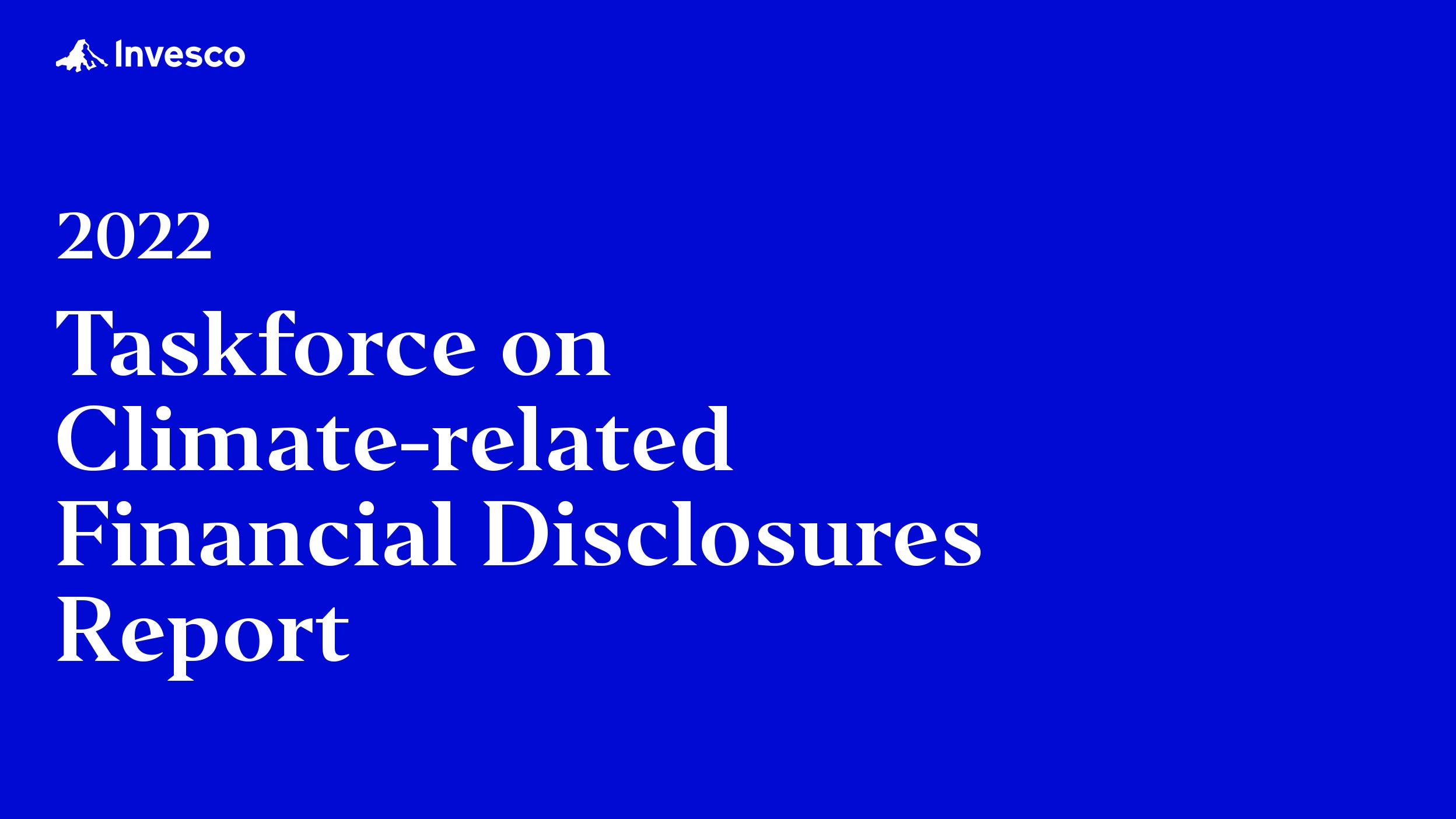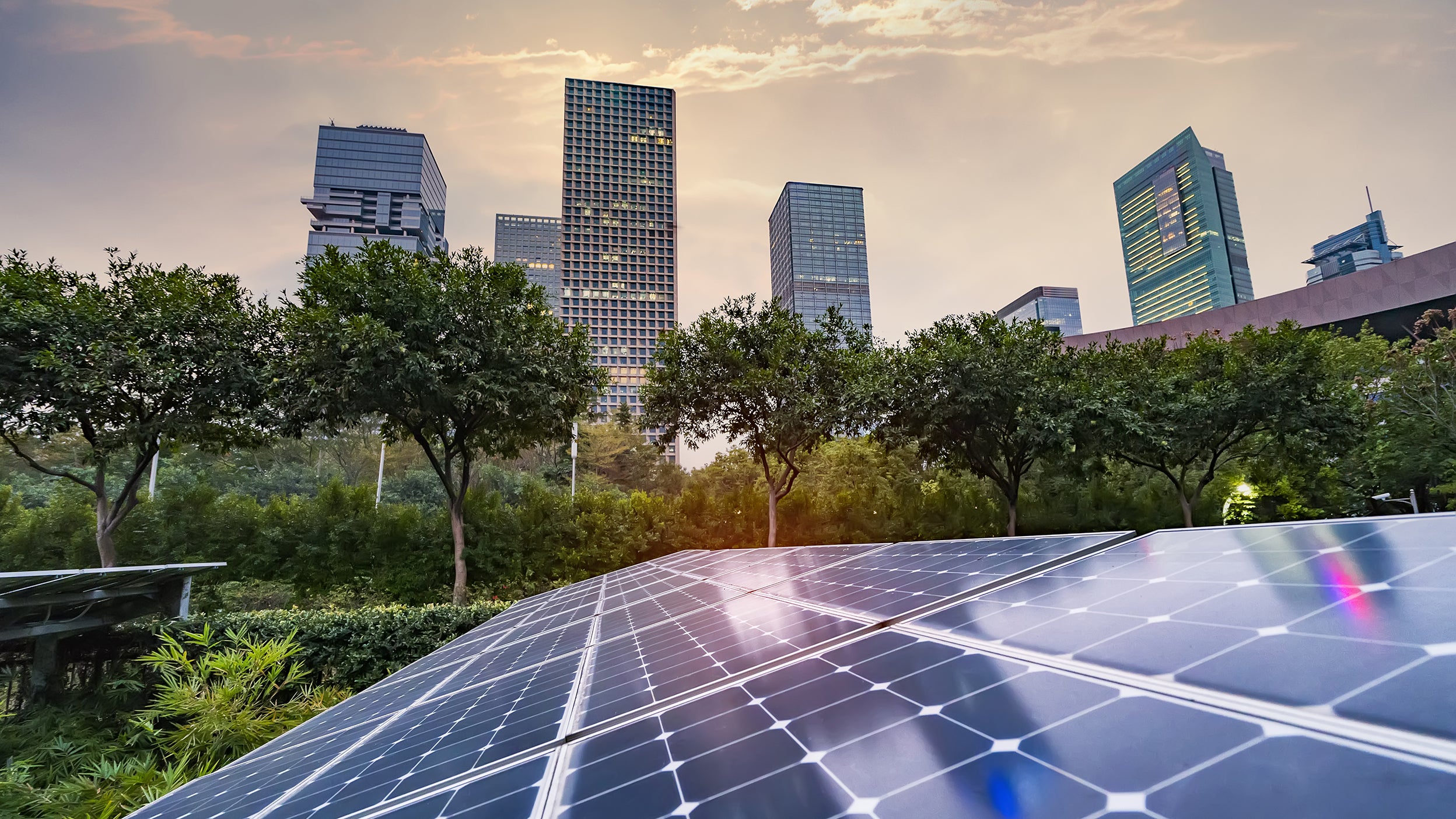
2022 Global TCFD Report
Our fourth annual TCFD Report provides a comparable, investor-relevant disclosure on our activities and capabilities in climate-aware investing. Find out more.

In today’s low spread environment, there is less room than ever for stranded assets.2 Yet, in the global shift towards clean energy, some companies are being left behind. The International Energy Agency (IEA) argues that clean electricity is the first step towards net zero. In light of this, should investment grade portfolios focus their attention on this sector?
The IEA’s special report, Net Zero by 2050: A Roadmap for the Global Energy Sector, sets out the need for electricity generators to eliminate emissions and envisages a dramatic shift towards renewables.3
Like the IEA, we see clean electricity as a key enabler of net zero by 2050. We also believe that investors can reduce transition risk in their portfolios by investing in electricity generators with low carbon intensity, or with plans approved by the Science Based Targets initiative (SBTi).4
Figure 1 suggests that a reduction in heat and electricity emissions this decade will act as an important first step in allowing industry and transport to decarbonise. Intuitively, this makes sense.
There is no point moving from gas-burning vehicles to electric vehicles if consumers are burning fossil fuels to charge car batteries.
Source: IEA. Scenario projections as of 2019. mt is metric tons.
It is also worth noting that, over time, more companies are issuing sustainability-linked bonds. To meet the key performance indicators associated with these, issuers are having to source increased amounts of clean energy.
In our view, this confirms the pivotal role that electricity generation (a material emitting sector under the Net Zero Investment Framework) will play in starting the transition toward net zero, and explains why this sector requires investor focus.
Although the electric utility sector has traditionally been slow to change, we believe the pace of transition going forwards could surprise investors.
The IEA’s roadmap to 2050 envisages radical growth in the proportion of energy generated by renewables. As shown in Figure 2, renewables will need to increase from 12% of global energy production in 2020 to 31% in 2030, effectively at the cost of oil- and coal-powered generation.
Source: IEA. Scenario projections as of 2019.
The IEA also predicts that advanced economies will decarbonise the electricity sector by 2035, in line with strong commitments from governments (including President Biden’s target to decarbonise power in the US). Developing economies will follow by 2040, the IEA suggests.
We believe this rate of change will allow a meaningful reduction in the level of carbon intensity within the utility sector – a pre-requisite to the decarbonisation of other industrial sectors.
As clients align their investment grade credit portfolios with net zero, decreasing the carbon intensity of their allocation to the electricity sector will become increasingly important. The Towards Sustainability initiative has created a glide path for emissions reduction (Figure 3), proposing a maximum of 393gCO2/kWh in 2021.5 It tapers this maximum over time, arriving at 315gCO2/kWh by 2025.
Source: Towards Sustainability Initiative. Targets as of 11 May 2021.
Separately, we note that the European Union Taxonomy is proposing a much stricter target of 100gCO2/kWh, tapering down every five years to reach zero by 2050.6
Given the rapid shift towards renewables, we believe the carbon intensity of all electricity producers should be falling. As such, it makes sense to screen heavy emitters along these lines. As well as aligning with net zero, low emitters are less likely to face the capital expenditures associated with modernising their generation capabilities. They are also less likely to suffer the losses associated with stranded assets.
As net zero commitments are long-term in nature, they are easy for management teams to promise, but much harder to deliver.
Tools like the Transition Pathway Initiative (TPI) can help us understand how issuers plan to decarbonise over time. Likewise, setting a science-based emissions reduction target can be an important first step.7 If the SBTi approves an issuer, confirming its compliance with a 1.5°C framework, we believe the issuer merits inclusion in net zero-aligned portfolios.8
Clearly, such a stringent approach will reduce the investible universe within the electricity sector. However, we believe this approach is appropriate for two main reasons. Firstly, the most radical reductions in emissions will likely be achieved in this sector over the next decade. Secondly, a greener electricity sector will facilitate the decarbonisation of other industrial sectors in the decades that follow.
Numerous factors are incorporated into a decision to invest in a fixed income portfolio: fundamental credit quality; ESG credentials; net zero alignment; and climate change exposure. Investors cannot adopt a one size fits all approach.
IFI closely monitors ESG risks across its portfolios, particularly in the rapidly evolving net zero alignment space. Our well-resourced, experienced credit team is important in assessing the issues raised here and informs our investment decisions.
We seek to ensure that credit spreads adequately reflect downside risks, including ESG factors. Where this is not the case, at-risk names are avoided.

2022 Global TCFD Report
Our fourth annual TCFD Report provides a comparable, investor-relevant disclosure on our activities and capabilities in climate-aware investing. Find out more.

ESG investment outlook: Making sense of data and regulatory challenges
In 2023, Invesco’s Global ESG team are paying attention to navigating data challenges, exploring the social aspect and better understanding divergent regulations.

Our approach to ESG when investing in real estate
At Invesco Real Estate, we believe that environmental, social and governance (ESG) criteria can support good investment performance and help us met our clients’ goals.
1 Transition risk can be defined as credit deterioration due to increased investment in renewables.
2 Stranded assets are assets that have lost value or become liabilities.
3 Source: IEA, Net Zero by 2050: A Roadmap for the Global Energy Sector, May 2021.
4 The SBTi defines and promotes best practices in emissions reductions and net zero targets in line with climate science.
5 Towards Sustainability is a Belgian industry label for socially responsible and sustainable financial products.
6 The European Union Taxonomy for sustainable activities is a classification system established to clarify which investments are environmentally sustainable, in the context of the European Green Deal. The aim of the taxonomy is to prevent greenwashing and to help investors make greener choices.
7 The SBTi is a global partnership between the Carbon Disclosure Project (CDP), the United Nations Global Compact, the World Resources Institute (WRI) and the World Wide Fund for Nature (WWF). The SBTi provides a framework for companies to set targets and disclose their progress annually.
8 A 1.5°C framework includes goals and commitments to limit the rise in global temperatures to 1.5°C.
The value of investments and any income will fluctuate (this may partly be the result of exchange rate fluctuations) and investors may not get back the full amount invested.
This document is marketing material and is not intended as a recommendation to invest in any particular asset class, security or strategy. Regulatory requirements that require impartiality of investment/investment strategy recommendations are therefore not applicable nor are any prohibitions to trade before publication. The information provided is for illustrative purposes only, it should not be relied upon as recommendations to buy or sell securities.
Where individuals or the business have expressed opinions, they are based on current market conditions, they may differ from those of other investment professionals, they are subject to change without notice and are not to be construed as investment advice.